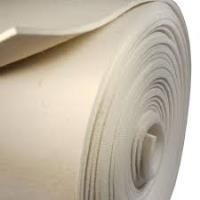 Add My Company
Add My Company
Sign In
The FACTS about FELT
16/11/2017

Felt can be made from Wool, Viscose, Polyester, Polypropylene, Recycled PET, Kevlar, Nylon or Cotton.
MYTH?. Felt is used as a Noun that describes a fabric but is also derived from a Verb that describes a process. FELTING.
Only wool (mainly from sheep) can be felted.
To FELT is the description of a process of steaming, shrinking and mechanical action to naturally interlock fibres to produce a mat or pad of wool textile.
Other fibres can be blended with wool to change the final characteristics of the textile as long as the product can be ?Felted?.
Any other process that produces a fabric using any of the above fibres (including wool) by any means other than Felting, Weaving or Stitching is classed as a non-woven.All Felts are the same.
All Felts are the same.
MYTH?.. All felts are in some way different based upon factors such as
1. Type of wool used in manufacture
2. Type of machinery used
3. Acidity or alkalinity of local water sources
4. Naturally or artificial drying techniques
5. Manufactured in Europe or Asia
6. Volume of blended fibres or fillers used in manufacture.
Synthetic fibres off the same characteristics as wool
MYTH?
Synthetic non-woven fabrics have their place in industry. They make excellent filtration mediums; they can be dyed to brilliant colour ranges. They can exhibit excellent thermal and acoustic insulation, and in some cases can be a lower cost alternative to a wool felt at a similar thickness.
However?.
They cannot hold and transfer oils and liquids as efficiently as wool felt.
They do not cut as cleanly as a wool felt as they tend to fray or split.
Many rely on oil and petrochemicals for their manufacture
They tend to melt at elevated temperatures and the resultant molten mass can ignite
They can be difficult to recycle
Wool Felt is very expensive
TRUE? in some respects.
But?.How many fabrics can you buy in the world that can come as thick as 1? (2.5cms). Not many I would imagine, unless you want to buy wool felt; and some wool felt can be made up to 4? thick (10cms).
On average a square metre of wool felt at 2.5cms thick will contain approximately 2 Australian sheep fleeces (a fleece in Australia weighs approx. 4.5 kilos). That?s an awful lot of wool to process and felt together just to manufacture 1 square metre of felt.
It can take weeks to blend, process and dry a piece of wool felt effectively and so the ultimate cost is directly related to the wool cost and the manufacturing time.
But in other ways it?s a
MYTH
The majority of wool felt used in the world is manufactured in a thickness range between 1mm and 5mm. At these gauges wool felt is an extremely cost effective product given is particular benefits and diverse characteristics between different hardness?s.
1mm felt is manufactured on highly efficient machines that manufacture continuous rolls of product at high speed. Because of it relatively low thickness these felts can be dried very quickly and finished within days.
Even at 5mm thick the manufacturing process is so much quicker than at elevated thickness?s and the cost at this level is reflected in the demand.
For more information on The FACTS about FELT talk to British Felt Company
Enquire Now
List your company on FindTheNeedle.

